Inspiring Stories – The Brilliant Club
In this EPEC Inspiring Outreach Story, Melissa Mirino, a PhD student at the Open University, describes engaging school students with her thesis.
My strong enthusiasm for space exploration started from a very young age, after attending planetarium shows and astronauts’ events. Since I have been largely inspired by outreach events myself, I have developed a personal interest in inspiring the younger generation to consider a career in science. I have taken up many teaching and outreach opportunities to develop activities for students of different ages and to share my passion for space with the public.
One of the most important and inspiring experiences I have taken part in so far relates to my work as a PhD tutor with The Brilliant Club. This award-winning charity that works with schools and universities across UK. The aim of the organisation is to inspire students from under-represented backgrounds to progress to highly-selective universities.
As a Brilliant Club Tutor, I have been creating and delivering tutorials related to modern topics in STEM, from climate change to planetary science.
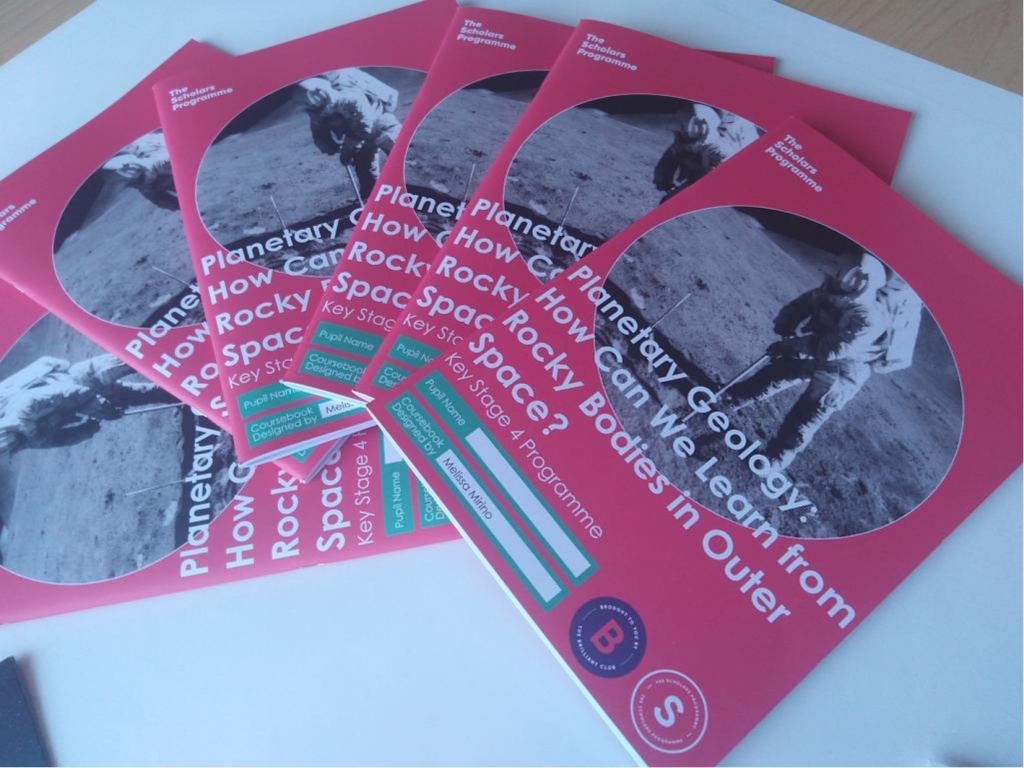
Figure 1 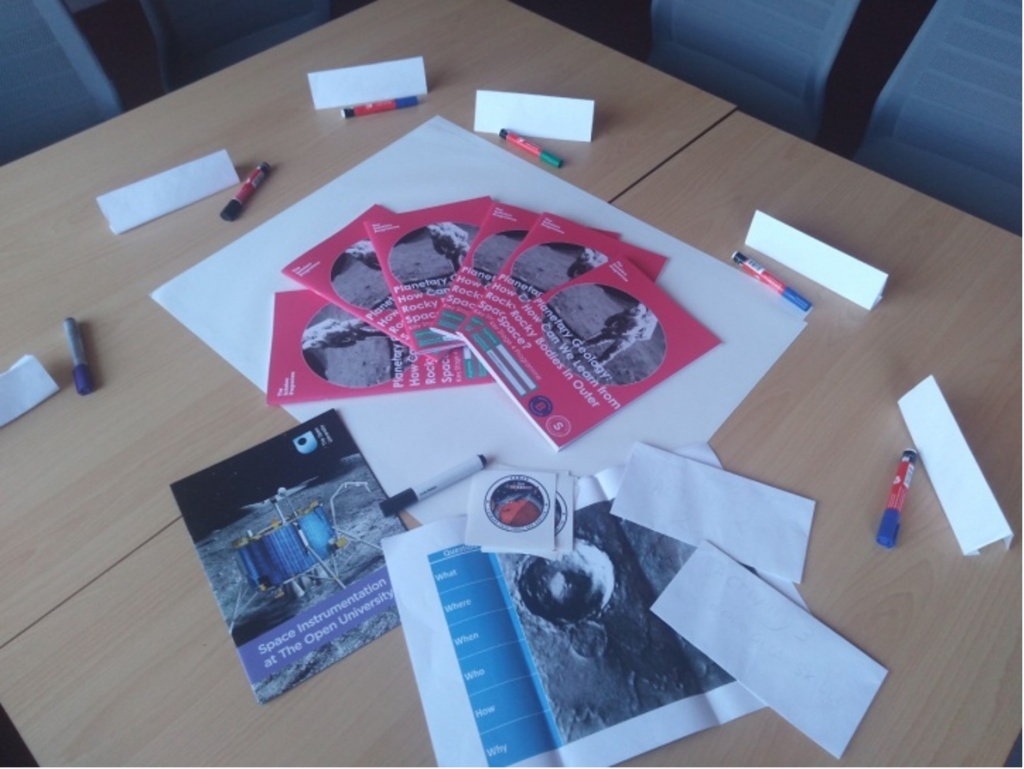
Figure 2 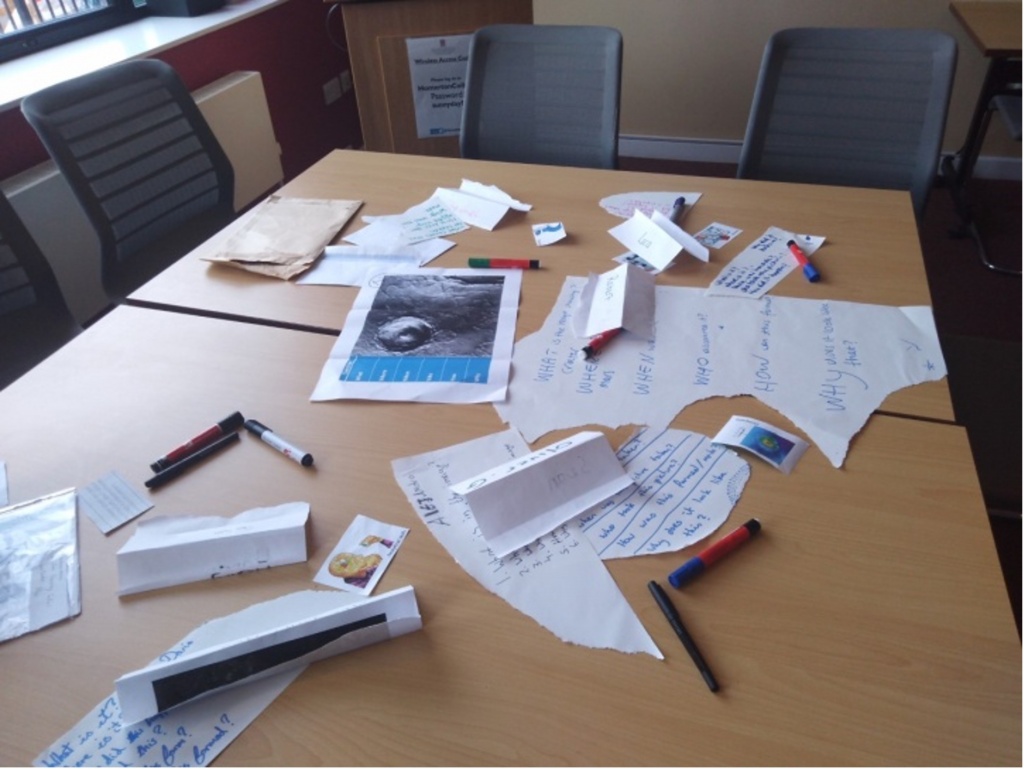
Figure 3
Thanks to the support of my mentors, I had the opportunity to create a custom Handbook, where I could create lessons and activities based on my personal experience (Figure 1). The Handbook is structured in sections to introduce pupils to the many aspects of the space exploration, creating interactive and different types of activities (see images) to cover and stimulate multiple intelligence types (logical, verbal, visual, etc.).
During my seven tutorials, students explored the various stages of space missions from the primary concept to the data collection phase. They debated the best target for a space mission, selected landing sites, interpreted data from real active missions (Figure 3-4-5), described the martian surface using 3D images (Figure 6), and much more.
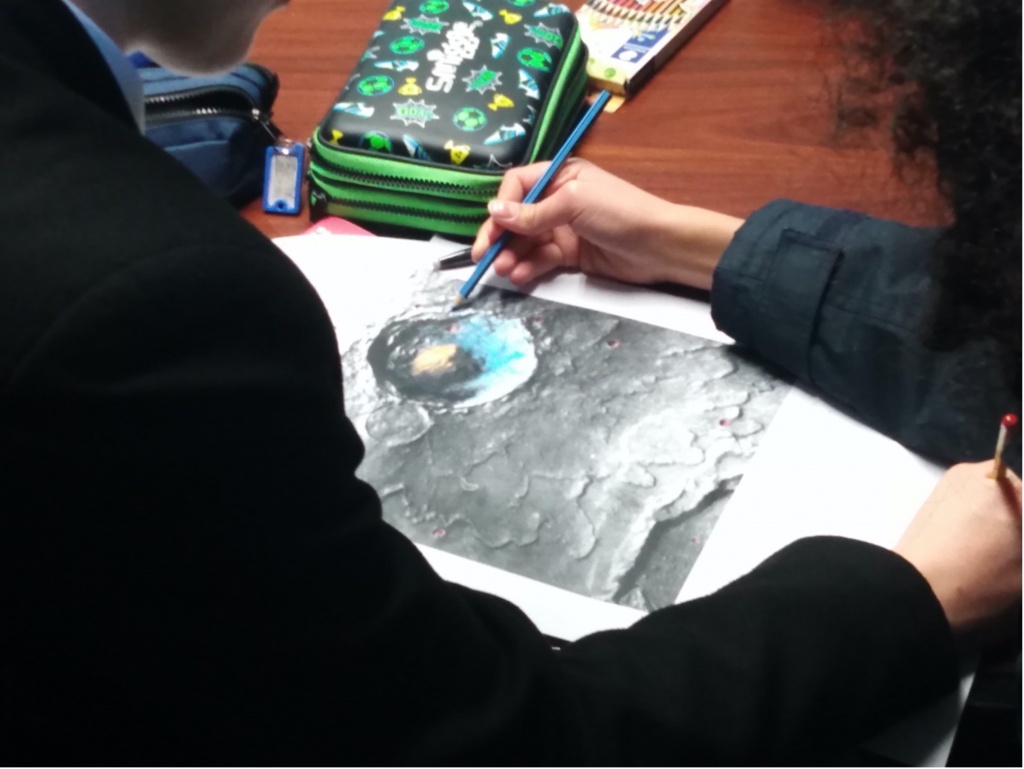
Figure 4 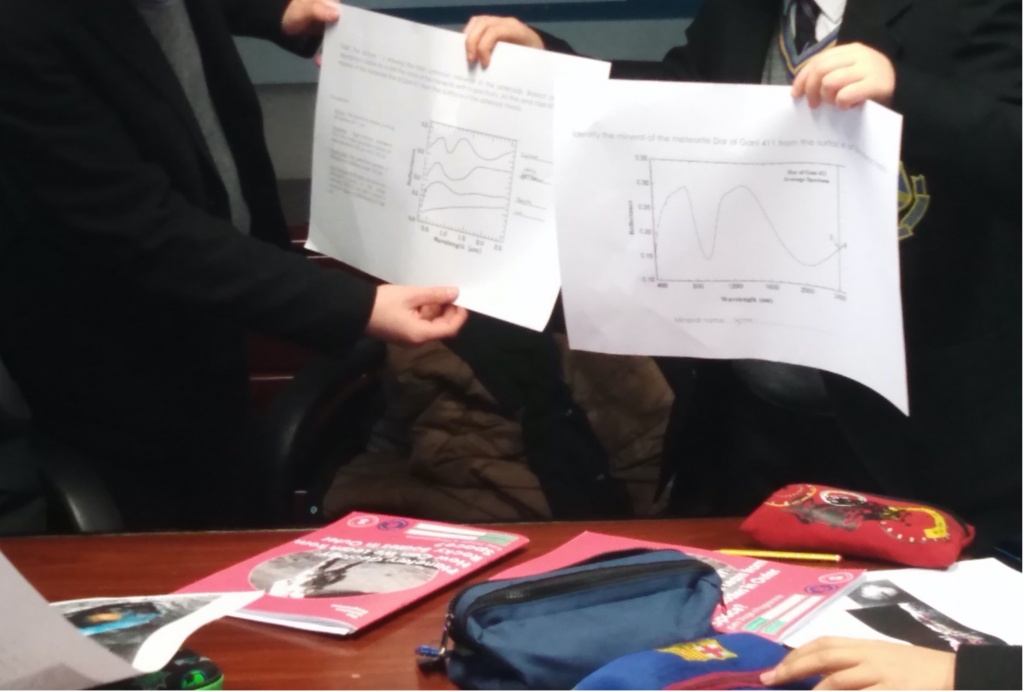
Figure 5 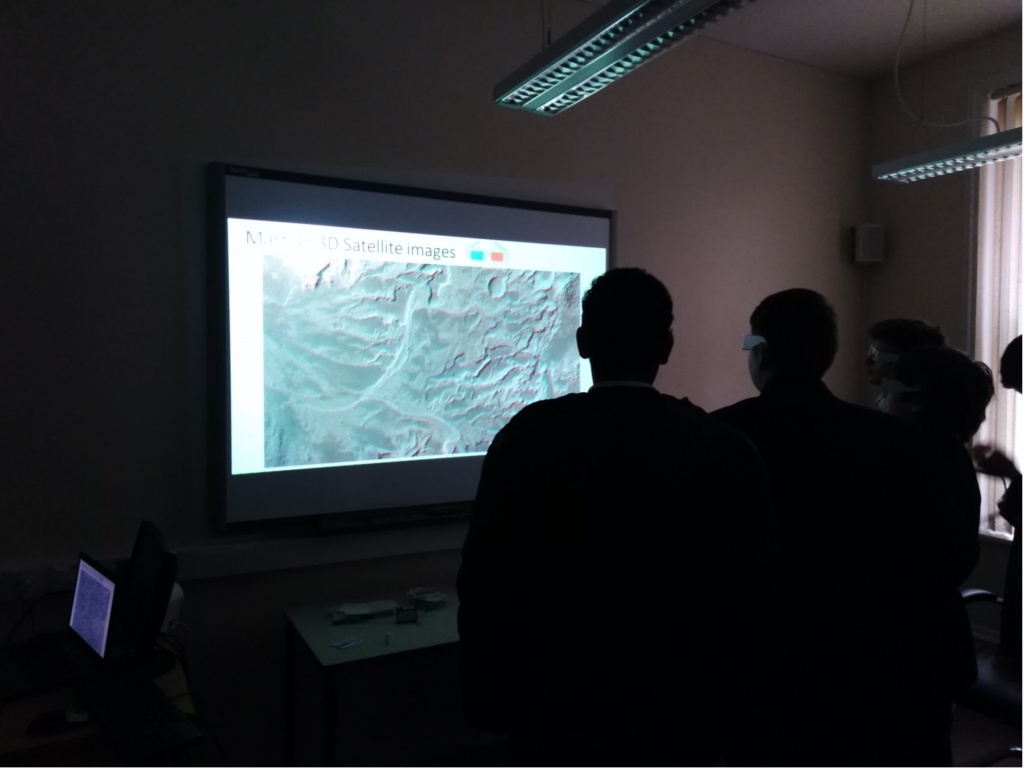
Figure 6
For the final assignment, NASA Mission Calling, I asked students to propose a mission to NASA, selecting a target and identifying a main research question, as well as the instruments they would need to carry out their investigation. This exercise allowed them to express their imagination, and have fun exploring and learning about the Solar System. They also gained experience of following rules of structure and references, and an important mind-set that they can apply to future challenges.
Reading their essays was inspiring and a lot of fun! You can read some excerpt from their essays below.
Working as PhD tutor made me realise how great and smart those kids are, but how the lack of support and self-esteem could influence their performances or could demotivate them in pursuing a career in STEM or academia. Space and human missions can be very engaging for young people and I hope that my contribution will have had a positive impact. I really hope that those kids will find their personal space, wherever it means for them.
The Brilliant Club was an amazing experience and I would recommend young professionals in UK to consider getting involved. More information can be found at: https://thebrilliantclub.org/
Excerpts from a few of the students’ essays, where they explained why their missions would benefit the human race:
[…] This mission is particularly important for the advancement of future human knowledge because if we were to find signs of extra-terrestrial life, we could use this to work out the conditions needed for it to survive. We can then move on to bigger things, like creating an environment on earth that matches these conditions and possibly grow new forms of life. […]The knowledge we acquire from possibly finding and sustaining life on Mars can improve our agriculture as we would need to develop new techniques to grow crops, using less water which is very limited on Mars.
[…] This mission is important because it will help us determine if there is other life in our solar system, even if it is primitive bacteria. If we do discover life in the subterranean oceans of Europa, this mission could teach us about how bacteria evolved over the millennia by comparing them to bacteria here on Earth. This mission may also inform us about whether it is possible for life to exist so far away from the Sun. […] We also might be able to learn more about cryogenic storage and how to preserve things in ice, as may have happened on this celestial body. All of this it will enhance our knowledge about other celestial bodies bigger than Europa, including another moon orbiting Jupiter called Ganymede which also has a subterranean ocean. It will also enable us to prepare for colder environments deep in space where solar panels are not as effective at producing power. This would help us plan for and prepare deep space missions. For example, if the water and ice is clean, we could rely on using planets and moons like this to resupply water and oxygen rather than having to transport large quantities from Earth, helping us conduct deep space manned missions.
In conclusion, my proposal is to send a satellite with a lander to test for biosignatures in the ice. My target is Enceladus due to it fitting all the requirements for life as the temperature stable liquid water has inside it the energy source of hydrothermal vents, Enceladus has an atmosphere and it is less radioactive than possible moons of the Jovian system. By finding biosignatures in the sub-surface ocean of Enceladus we could further human knowledge about the conditions needed for life to form, it could prove to us the existence of extraterrestrial life and it could provide key information about how life on earth originated and adapted.
[…] I think that this mission […] could improve the future greatly because then NASA can be sure that they can populate Mars and then attempt to do it. This has the possibility to change where people live forever. If there were bacteria living on Mars, it would be incredible. If life were to be found, then NASA could study how that life form survives in such harsh conditions. To help with NASA’s future, this would be a huge potential way of making an enormous amount of discoveries, potentially leading to minerals being discovered, since everyone knows how scientists and the world of science are desperate to make such discoveries.
[…] The first reason I believe this research will be beneficial to humans and scientists is because Europa has liquid water, which is rarely, if not never, found on other planets besides Earth. This means that Europa has at least one of three main components needed for humans to thrive and survive. Europa also hosts key elements needed for humans to survive – oxygen, nitrogen and hydrogen – which suggests we could somewhat find and get oxygen and water. Compared to other planets with thick atmospheres, high temperatures or gas planets, they don’t contain liquid water, although they may contain deltas or frozen lakes. This gives Europa an advantage over these planets, as they have something which planets do not have, except for Earth. Since Europa also has flowing water, scientists could study as a terrestrial analogue and try to find an area similar to the flowing river or lake underneath the surface of the moon Europa.
[…] This mission is crucial in human advancement as it will definitely deepen our understanding of Mars. […] This will help us to understand our solar system more in depth but that is for the future first we have to get to Mars. This would greatly improve the quality of our lives. Let us say we do find extra- terrestrial life this tells us life can exist outside of Earth which if one day we need to move we have a location to go. It would be a way to assure the survival of humanity in the case something bad occurs in the future to our planet who know climate change might make us have to leave our beloved Earth.
Do you like this story and want more? Browse our archive of EPEC Inspiring Stories and get inspired!

